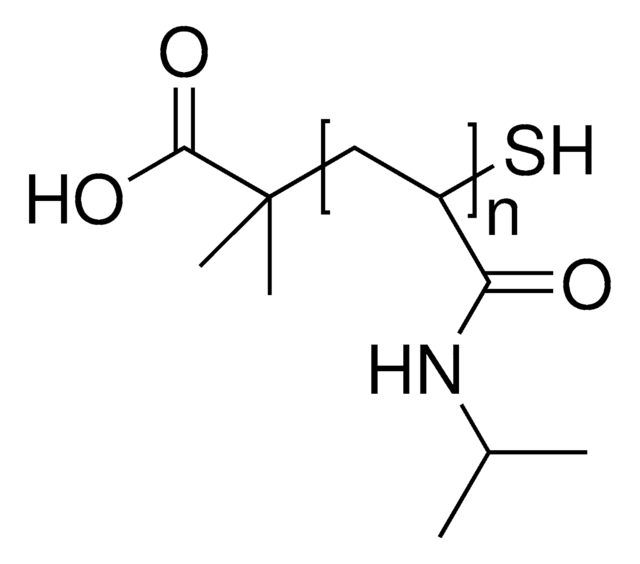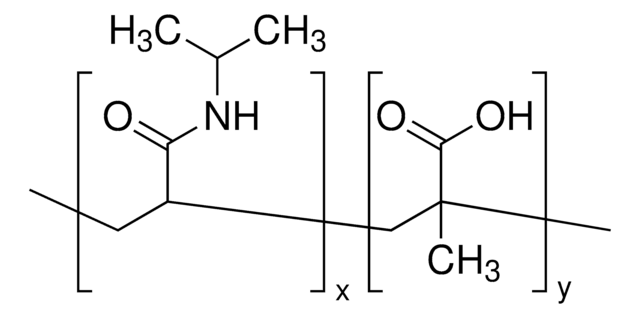推荐产品
一般說明
Random copolymer of N-isopropylacrylamide with 12 mole % butylacrylate. This copolymer shows LCST at 15 C (lower temperature than PolyNIPAM).
應用
Thermosensitive polymer; can be used to form a hydrogel. Aqueous polymer solution undergoes a phase transition from a soluble to an insoluble state when the temperature is raised to ca. 15 °C.
儲存類別代碼
11 - Combustible Solids
水污染物質分類(WGK)
WGK 3
閃點(°F)
Not applicable
閃點(°C)
Not applicable
A Gutowska et al.
Journal of biomedical materials research, 29(7), 811-821 (1995-07-01)
Biomer/poly(N-isopropylacrylamide)/[poly(NiPAAm)] thermosensitive polymer blends were prepared and their application as heparin-releasing polymer coatings for the prevention of surface-induced thrombosis was examined. The advantage of using poly (NiPAAm)-based coatings as heparin-releasing polymers is based on the unique temperature-dependent swelling of these
G Chen et al.
Nature, 373(6509), 49-52 (1995-01-05)
There are many potential applications of 'intelligent' aqueous polymer systems in medicine, biotechnology, industry and in environmental problems. Many of these polymer systems undergo reversible phase transitions--for example, abrupt changes in volume--in response to external stimuli such as temperature, pH
商品
By altering the physicochemical properties, smart or intelligent drug delivery systems can be designed to deliver therapeutic molecules on-demand. Learn more about the application of stimuli-responsive materials in drug delivery.
通过调整的理化特性,药物递送系统可根据需要设计为可递送治疗分子的智能系统。了解有关刺激响应材料药物递送应用的更多信息。
Immunosuppressive tumor-associated myeloid cells (TAMC) are responsible for glioblastoma (GBM) resistance to immunotherapies and existing standard of care treatments. This mini-review highlights recent progress in implementing nanotechnology in advancing TAMC-targeted therapies for GBM.
我们的科学家团队拥有各种研究领域经验,包括生命科学、材料科学、化学合成、色谱、分析及许多其他领域.
联系技术服务部门







